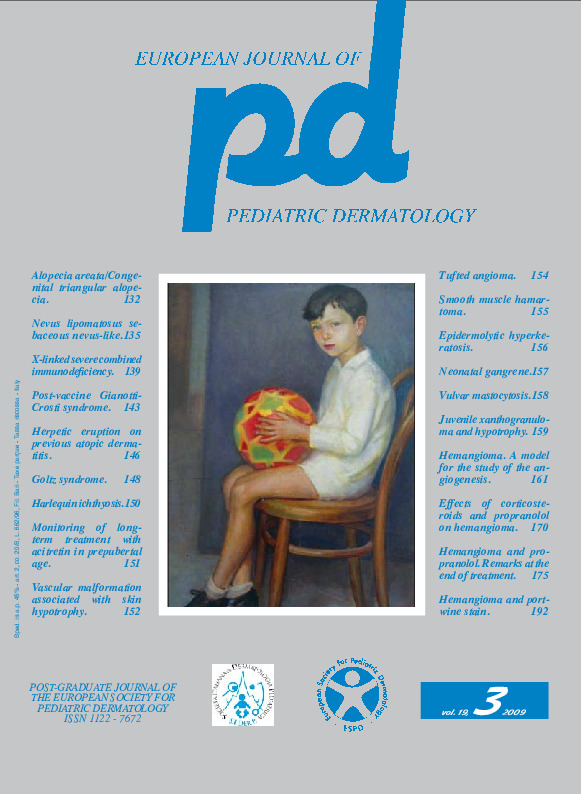Focal dermal hypoplasia (Goltz syndrome).
Downloads
How to Cite
Bonifazi E. 2009. Focal dermal hypoplasia (Goltz syndrome). Eur. J. Pediat. Dermatol. 19 (3):148-49.
pp. 148-149
Abstract
A 17-year-old girl was first observed due to the presence of cutaneous lesions present since birth. The same lesions were present, although less severe, in her elder sister, mother, aunt and maternal grandmother. Her relatives had previously received a diagnosis of incontinentia pigmenti, due to the presence of linear hyperpigmented and, in her elder sister, inflammatory skin lesions arranged according to the Blaschko lines. The crusted, inflammatory lesions of her sister were localized on the right thigh (Fig. 1) and had been previously interpreted as a persistent inflammatory phase of incontinentia pigmenti. Delections of NEMO gene had not been searched for, because at that time such delections had not been yet discovered. The 17-year-old girl presented on the lower and median back erythematous and hyperpigmented lesions characteristically arranged according to the Blaschko line (Fig. 2). The lesions of the limbs, particularly of the left arm, where erythematous and atrophic lesions arranged according to the Blaschko lines were present, were a clue to the diagnosis. In the lower third of the left arm there were really raised, yellowish, soft and compressible, lesions that revealed the presence of superficial fat tissue (Fig. 3). There were also numerous papillomas on the medial surface of her thighs (Fig. 4). All her nails (Fig. 5) were irregular in their shape and surface, as well as in other members of her family. These cutaneous signs and a revaluation of her family history led to the final diagnosis of focal dermal hypoplasia (Goltz syndrome). The diagnosis was confirmed by additional family history putting in evidence numerous esophageal papillomas in two her relatives.Keywords
Goltz syndrome

